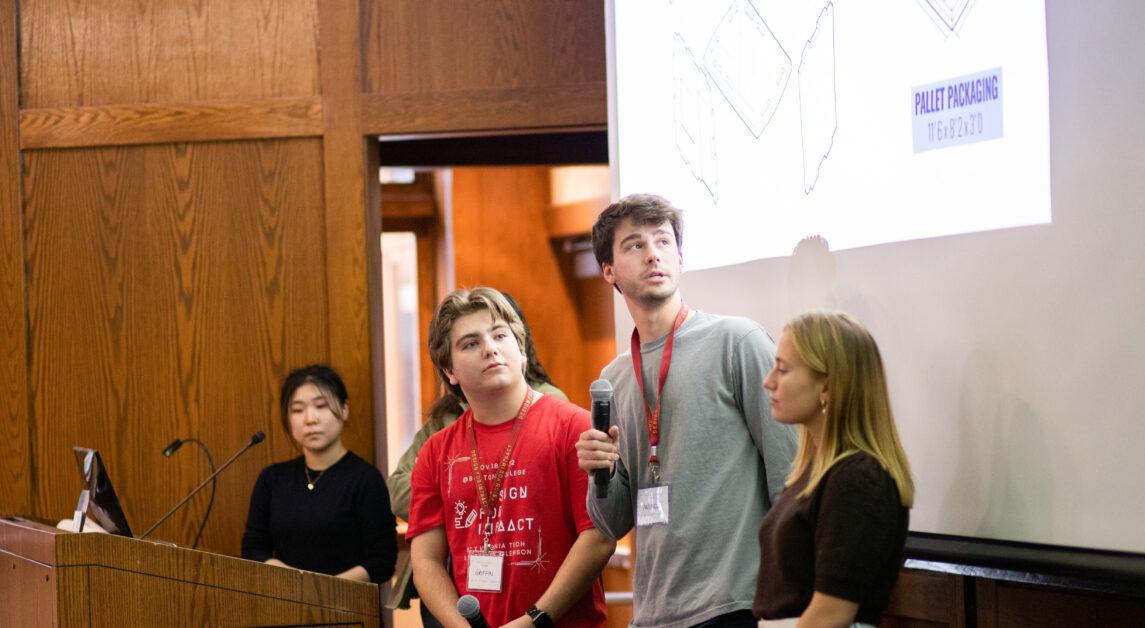“What’s going on with the ImpACCt Summit, as well as what we want to do on this campus, is to imagine, make, and impact,” Chiles said. “When you imagine, you can start doing things that people before you haven’t been able to do.”
Students from four of the Atlantic Coast Conference (ACC) universities—Virginia Tech University, Clemson University, North Carolina State University, and Boston College—collaborated in teams to develop creative solutions to real-world social problems at the Design for ImpACCt Summit on Friday.
Building these intercollegiate teams is important right now, according to Sunand Bhattacharya, associate vice provost of design and innovation strategy.
“Colleges typically compete with each other at all times, but we are getting to a point in our society where we need to break those boundaries, and this is a great example,” Bhattacharya said.
One of these teams—a group of social psychology and architecture majors—pitched Pod Connect, a safe haven resource-center designed to be implemented in subway stations.
“We hope to provide assistance to help-seeking individuals, providing an area that promotes a sense of community in subway stations, a space in which thousands of people pass through every day,” Griffin Naddy, Clemson ’23, said.
Other designs included Homesider, a home-buying app that considers sustainability, adaptability, and the walkability of a neighborhood.
“Some of the similar apps on the market were Zillow and Walk Score, but we thought we really brought something new and interesting to the market by looking at sustainability in different aspects of the home and curating an experience where users can rank their preferences within the app,” one of the group members said.
Mickey McManus, a senior adviser at the Boston Consulting Group, said there must be an emphasis on dynamic equilibriums in design. Dynamic equilibriums include improving products that adapt to better address the issues they are designed to target. Feedback, learning, and connectivity are important aspects of establishing a dynamic equilibrium, he said.
McManus said he realized the importance of constantly improving his designs when adapting this framework toward another project, in which he structured an office’s layout to minimize distractions and improve workers’ well-being.
“This was a team of architects that were working with us to explore generative design applied in physical spaces,” McManus said. “The idea was, once you’ve built the space, to leave the machine learning running so that it could evolve over time and make it better.”
Given the vast innovation occurring in today’s world, McManus said further emphasis should be placed on predicting when change will come and the underlying patterns that define it.
At the end of this talk, McManus left his audience with three big questions.
“How do we actually engage in the world and surprise ourselves before we’re surprised by somebody else?” McManus said. “How do we actually start to understand the underlying patterns? And how do we get better at making predictions about when something’s going to move from the impossible, to improbable, to meaningful change?”













